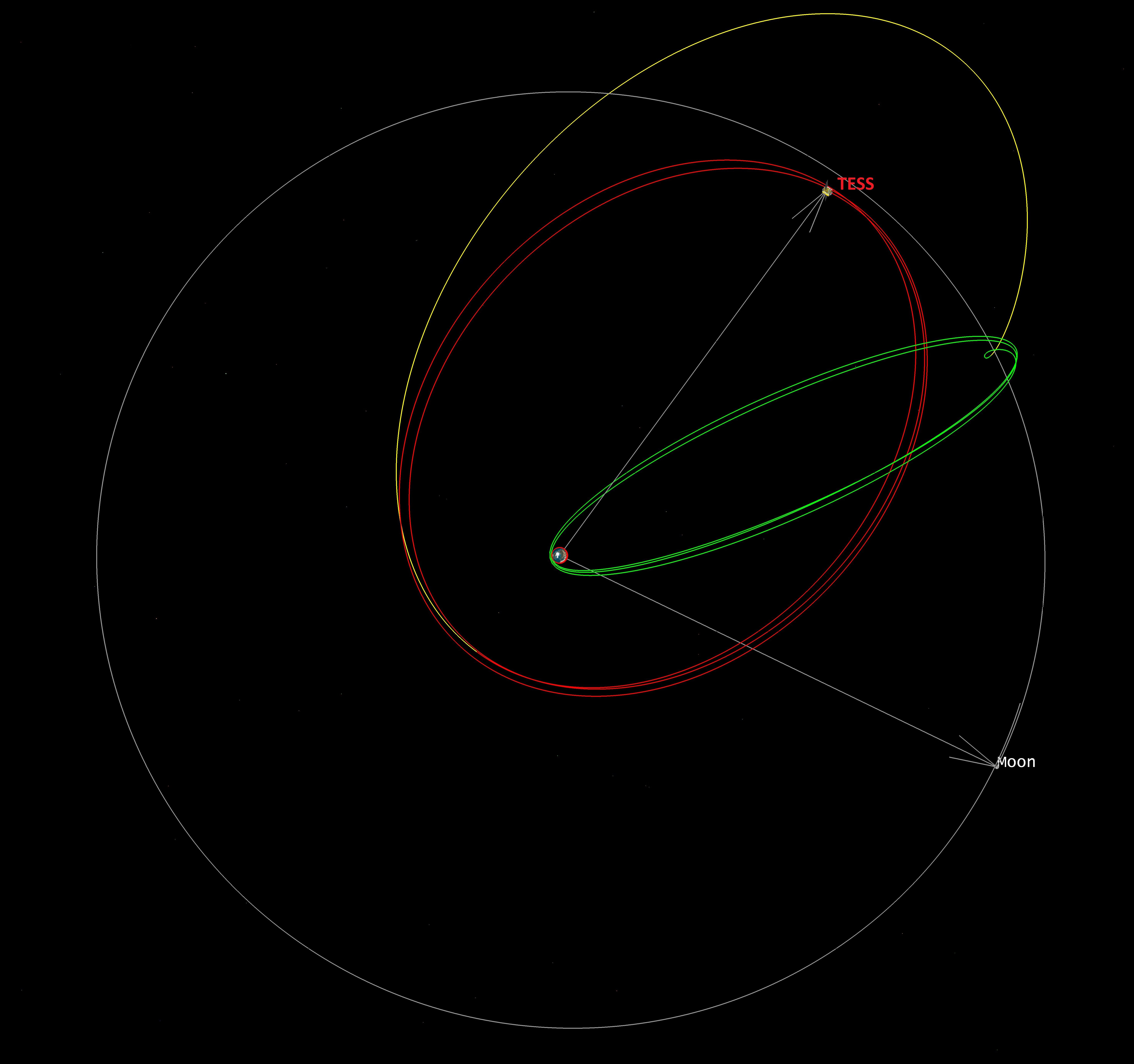- A Falcon 9 rocket carrying the TESS spacecraft launches on Wednesday.
- Nine Merlin engines, all purring along.
- The TESS spacecraft is eventually bound for a lunar resonant orbit.
- This will allow the spacecraft to observe nearby stars nearly continuously.
- It will also put TESS close enough to Earth to easily transmit data.
- It will take about two weeks to reach this special orbit.
- Then the spacecraft will be ready to provide science data in about 60 days.
- Scientists expect to find thousands of new exoplanets.
- Hopefully, some of them will be Earth-sized in the habitable zones of their stars.
Most everyone reading this story will probably know that a SpaceX Falcon 9 rocket launched on Wednesday carrying a NASA spacecraft into orbit—the Transiting Exoplanet Survey Satellite—that will further the space agency's mission of searching for exoplanets.
Less well known is the TESS spacecraft's clever orbit, which will enable an on-a-budget but robust science mission of searching for planets transiting in front of nearby stars. This "lunar resonant" orbit, which has never been used by a spacecraft, will allow TESS to both observe nearby stars and transmit data back to Earth with a minimal energy expenditure. (The useful lifetime of a spacecraft is often determined by its amount of onboard propellant).
Lunar resonant orbit
Science missions often need continuous and unobstructed views of their targets, and TESS is no different, as it will monitor about 200,000 relatively nearby stars for minuscule changes in their brightness. NASA's previous planet-hunter that searched for similar transits, the Kepler mission, observed its targets from an Earth-trailing, heliocentric orbit about 10 million km from our planet. Such an orbit has high costs in terms of energy needed to reach it, station keeping, and data limitations.

For TESS, the lunar resonant orbit will bring it to within as close as 108,000 km of Earth's surface (or about three times the height of geostationary orbit) and as far out as 373,000km away from the Earth, which is just inside the Moon's orbit. During a three-hour period at its closest approach, TESS will orient itself to send robust amounts of data to the planet (full-frame images), while spending most of the rest of its time during the 13.7-day orbit observing stars.
Science in 60 days
After this week's launch, it will take a couple of weeks for TESS to reach this stable orbit, as the spacecraft performs half a dozen thruster burns and utilizes a gravity assist from the Moon to reach its desired orbit. After that, it will undergo about two months of checkouts before beginning science operations.
At a cost of $200 million, the TESS spacecraft is about one-third the cost of the Kepler spacecraft, which had a main mirror with a diameter of 0.95 meter. The TESS apertures are considerably smaller: 10cm for four identical cameras. Its advantage is that, whereas Kepler observed a small area of the sky, TESS will look at much more, about 85 percent in total.
Because of its small cameras, the telescope will mostly find nearby stars (and, accordingly, exoplanets), likely those within 30 and 300 light years and which are 30 to 100 times brighter than Kepler's targets, according to NASA. If it is successful (and because of its stable orbit), TESS could very well exceed its design lifetime of two years.
Listing image by Trevor Mahlmann
Read Again https://arstechnica.com/science/2018/04/nasas-new-planet-finder-is-in-space-now-what/Bagikan Berita Ini














0 Response to "NASA's new planet finder is in space. Now what?"
Post a Comment